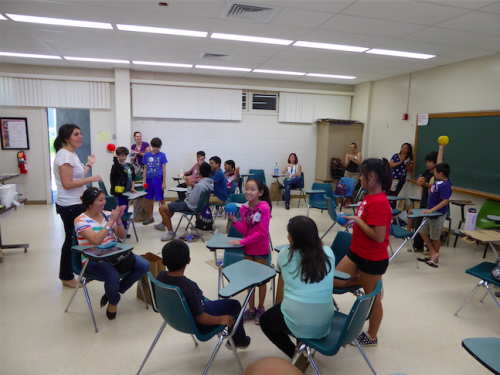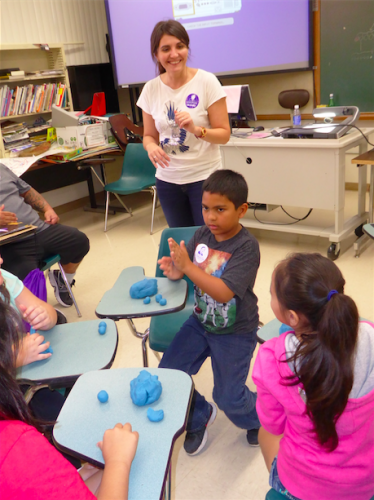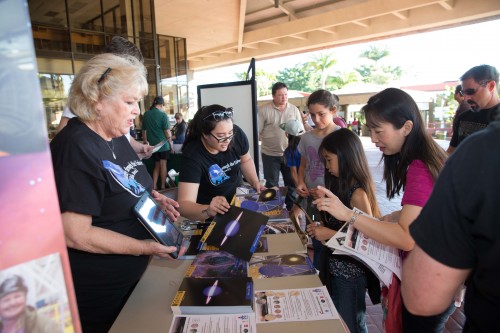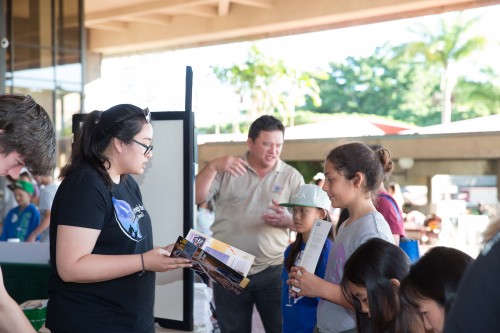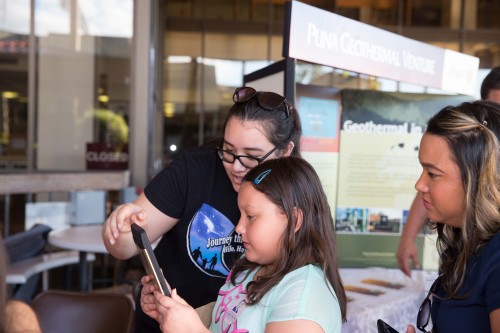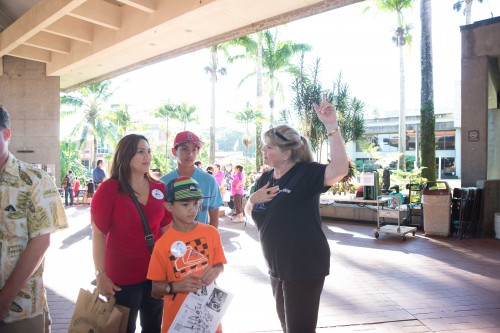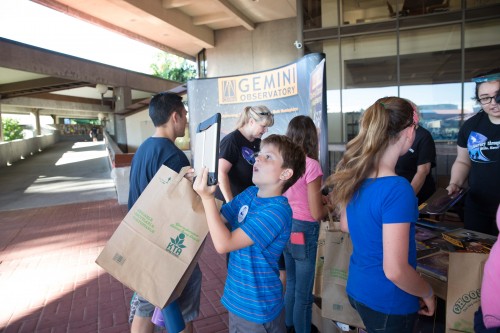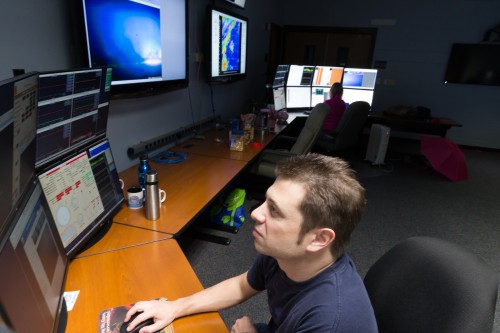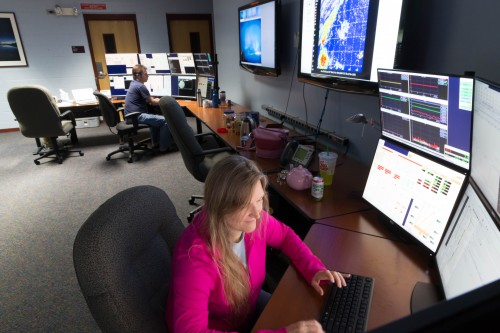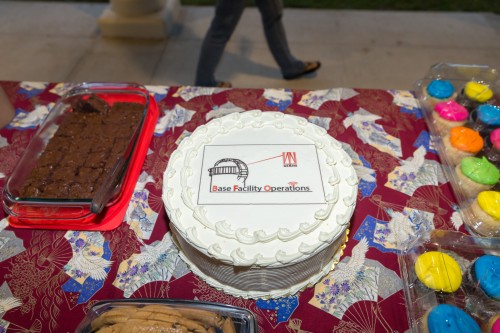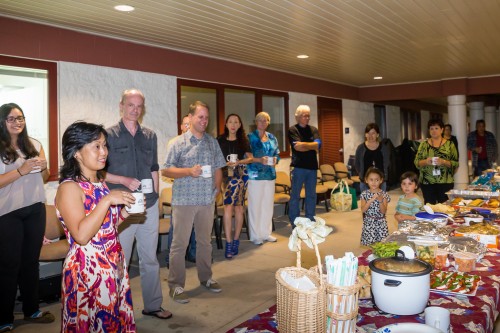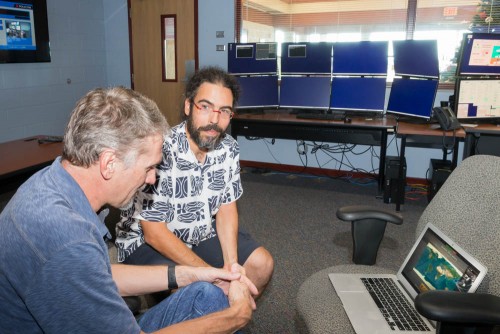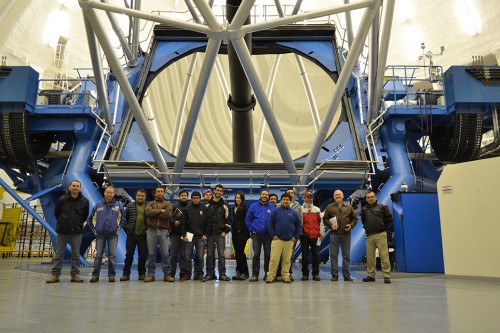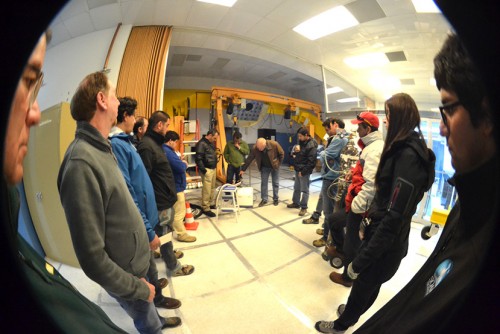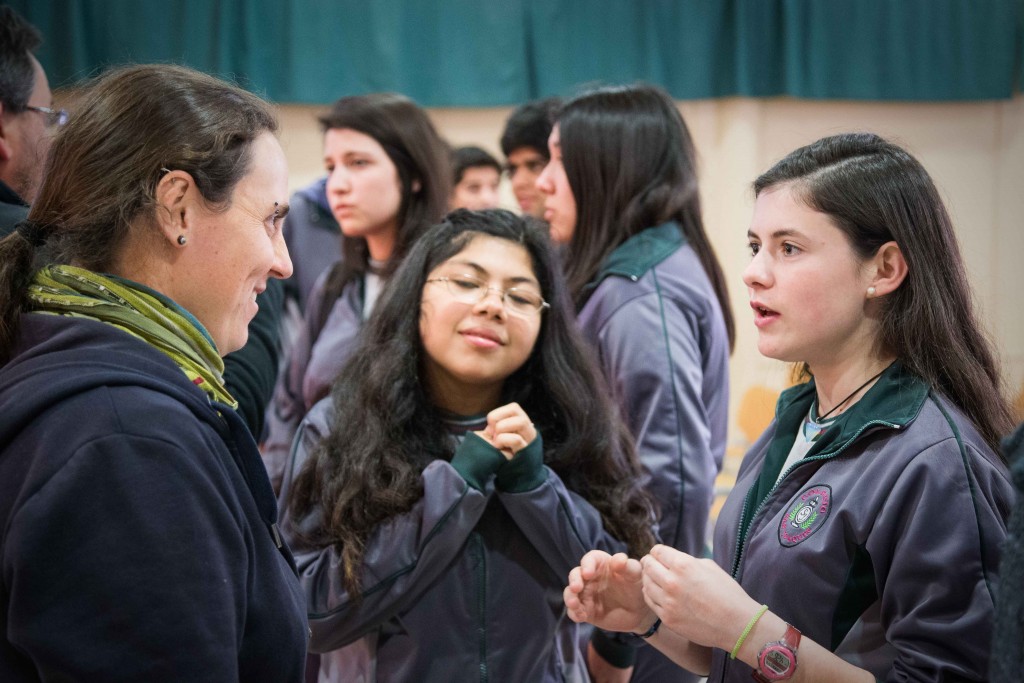
Gemini astronomer Pascale Hibon chats with students from the San Joaquín School after sharing her insights on a career in research. (Credit: Gemini Observatory/AURA) / La astrónoma de Gemini Pascale Hibon conversa con alumnas del Colegio San Joaquín luego de compartir su historia personal y sus impresiones sobre carreras de investigación. (Crédito: Observatorio Gemini/AURA).
Last week, Gemini’s annual outreach program Viaje al Universo featured an engaging career panel for local students in the La Serena area. Professionals from observatories in Chile encouraged and inspired students to dream big and strive to join the next generation of scientists who will explore the cosmos with Chile’s state-of-the-art observatories.
San Joaquín school hosted the nearly 100 students and teachers from participating schools in Gemini’s Viaje al Universo week. Targeting 11th and 12th graders, the event allowed panel members to share their career paths and answer questions that ranged from the education needed to be a data reducer, to where you can study to become an astronomer in Chile.
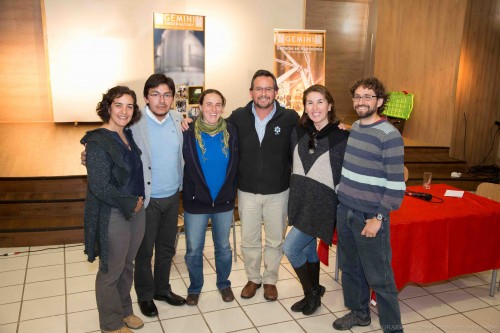
Verónica Firpo, astronomer, Gemini/ULS; Roberto Bermúdez, teacher of english, Carnegie; Pascale Hibon, astronomer, Gemini; Francisco Figueroa, architect, Giant Magallanic Telescope; Maria Antonieta García, journalist, Gemini and Guilermo Cabrera, AstroInformatics, Cerro Tololo Interamerican Observatory participated at the Viaje al Universo’s career panel last week. (Credit: Gemini Observatory/AURA)/ Verónica Firpo, astrónoma, Gemini/ULS; Roberto Bermúdez, profesor de inglés, Carnegie; Pascale Hibon, astrónoma, Gemini; Francisco Figueroa, arquitecto, Giant Magallanic Telescope; Ma. Antonieta García, periodista, Gemini y Guilermo Cabrera, AstroInformatics, Observatorio Interamericano Cerro Tololo participaron del panel de carreras de Viaje al Universo. (Crédito: Observatorio Gemini/AURA)
Staff from Gemini, the University of La Serena, the Cerro Tololo Inter-American Observatory (CTIO), the Carnegie Foundation, and the Giant Magellan Telescope (GMT) participated by sharing their stories and personal insights on their careers in astronomy. The presentations also included tips for students looking to build a career in astronomical research, or in other professions related to science and technology in Chile.
“Seeing and talking to these curious students brings back the original reasons for my career choice,” says Pascale Hibon a Gemini staff scientist. “They are giving us back a lot of the lost magic. And it is always great to take time to exchange with students,” she says.
Francisco Figueroa from GMT adds, “It is not easy to pick your career when you are 17 years old. I feel that sharing our own stories can definitely give some ‘behind the scenes’ information so that these young students have information about possibilities that they might not have considered previously.”
Pablo Arriagada, an 11th grader at the San Joaquín school says he plans to study a science related career. “I enjoyed the chance to connect with professionals pursuing careers in these diverse and exciting fields,” he said. Most of the students attending the career panel will graduate from high school and and are deciding career paths now. “It is very timely for students to ask about what observatory career fields are like, what staff love about their jobs, and to share advice,” added Silvia Novoa, counselor from the same school.
The career panel is one of many Gemini outreach activities that take place throughout the year in schools at both of Gemini Observatory’s host communities in the area of Coquimbo in Chile and in Hilo, Hawai‘i.
Trabajadores de Observatorios Comparten su Pasión por la Astronomía con Estudiantes
La semana pasada, el programa anual de divulgación de Gemini Viaje al Universo llevó a cabo un interesante panel de carreras para los estudiantes locales de la comuna de La Serena. Profesionales de observatorios en Chile entusiasmaron e inspiraron a estudiantes para aspirar a grandes sueños y esforzarse para ser parte de la próxima generación de científiocs que explorará el cosmos con los más modernos observatorios de Chile.
El colegio San Joaquín recibió a un centenar de alumnos y profesores de los colegios que participaron en la semana de Viaje al Universo que organiza el Observatorio Gemini. Enfocado para 3ros y 4tos medios, el evento permitió a los integrantes del panel compartir sus respectivos caminos profesionales y responder preguntas que variaron desde cuál es la educación que se necesita para ser un Reducidor de Datos hasta en qué universidades de Chile se puede estudiar astronomía.
Empleados de Gemini, Universidad de La Serena, Observatorio Interamericano de Cerro Tololo (CTIO), la Fundación Carnegie y el Telescopio Gigante de Magallanes (GMT) compartieron sus propias historias en las carreras dentro del campo de la astronomía. La presentación también incluyó consejos para los alumnos que buscan empezar una carrera en la investigación astronómica o en otras profesionaes relacionadas con la ciencia y la tecnología en Chile.
“Ver y hablar con estos alumnos tan curiosos me lleva de regreso a las razones por las cuales originalmente escogí mi carrera,” dice Pascale Hibon científica de Gemini. “Ellos nos están devolviendo un montón de nuestra magia perdida. Y siempre es maravilloso tomarse un tiempo para compartir con alumnos,” comenta.
Francisco Figueroa de GMT agrega, “No es fácil escoger tu carrera cuando tienes 17 años. Siento que compartir nuestras historias personales les brinda información detallada para que estos jóvenes puedan conocer nuevas posibilidades que quizás no hayan considerado previamente.”
Pablo Arriagada, alumno de 3ro medio del Colegio San Joaquín señala que piensa estudiar algo relacionado con el área científica. “Disfruto la oportunidad de conocer profesionales que desarrollan carreras en estos campos tan diversos, pero igualmente emocionantes”, dice. La mayoría de los alumnos que participaron en este panel egresa de enseñanza media en diciembre y están decidiendo sus opciones ahora. “Es muy apropiado en esta época del año que los alumnos puedan preguntar sobre cómo son las carreras dentro de un observatorio, lo que los profesionales más disfrutan de su trabajo y que escuchen los consejos que se les compartirá,” agrega Silvia Novoa, orientadora del mismo colegio.
El panel de carreras es una de las muchas actividades de difusión de Gemini que se llevan a cabo a lo largo del año en colegios de ambos sitios que albergan los telescopios del Observatorio Gemini tanto en la región de Coquimbo en Chile como en Hilo, en Hawai‘i.
